Loon Update
2024, No. 02 — June 3rd

Both Loon parents have been taking turns sitting on the egg, feeding on the Lake, and watching for predators and intruders.
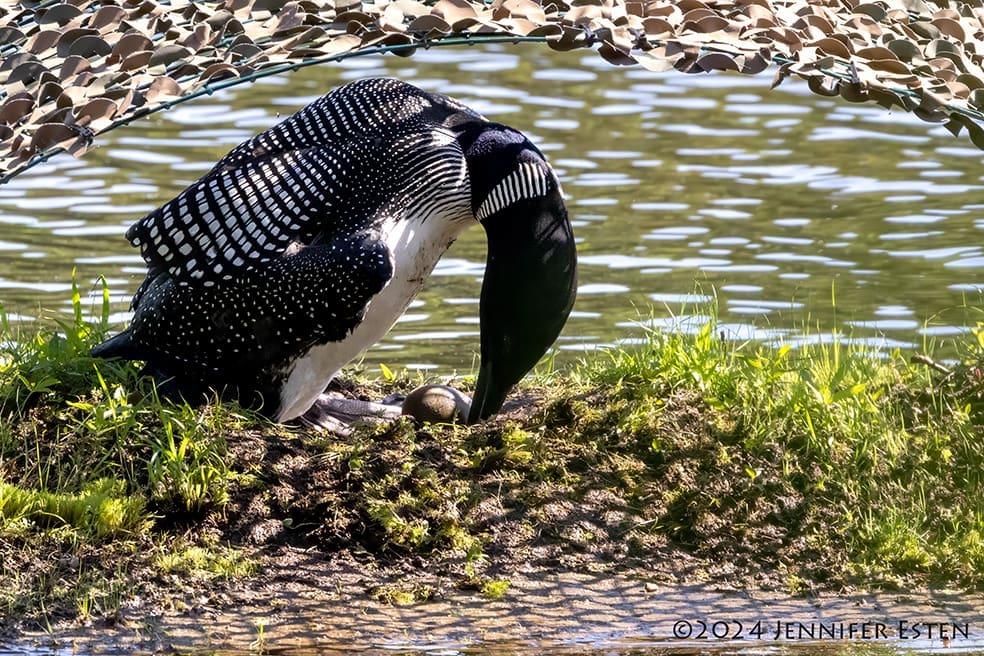
This year we have only one egg which is being turned regularly.
Celebrating Woodland Wildflowers
Watching the loons long enough to see them switch places at tending their egg provides plenty of time to enjoy the local woodland wildflowers. Here are some close-up photos Jen has taken.
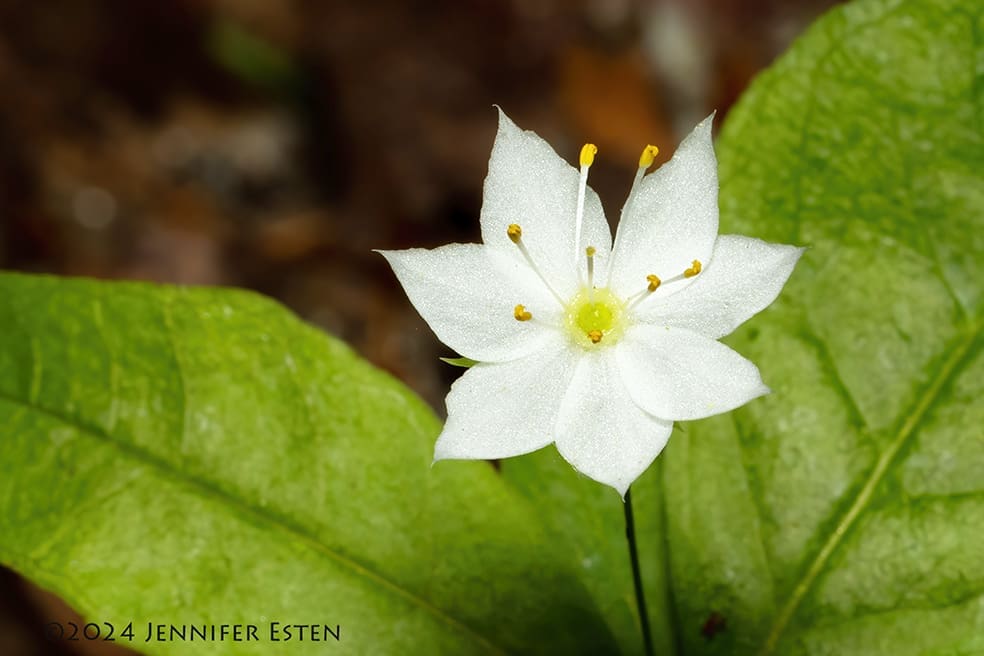
Starflower (Lysimachia borealis borealis) also the plant at the start of this newsletter
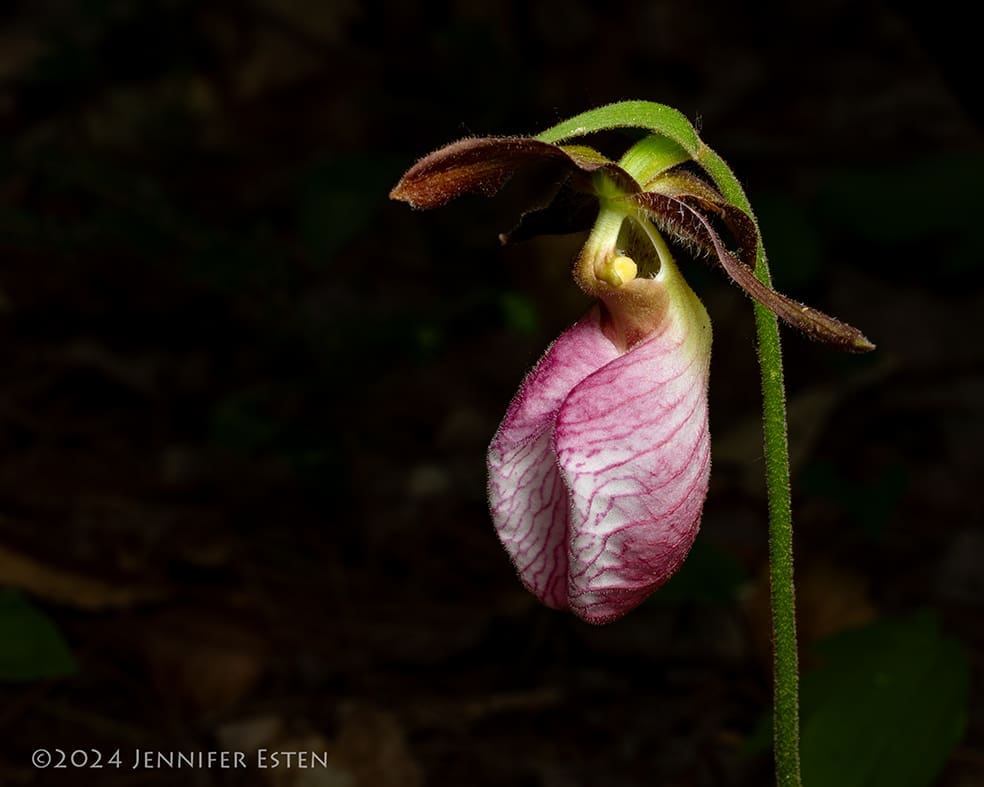
Pink Lady’s Slipper (Cypripedium acaule)

Canada Lily (Lilium canadense)

Indian Cucumber Root (Medeola virginiana)
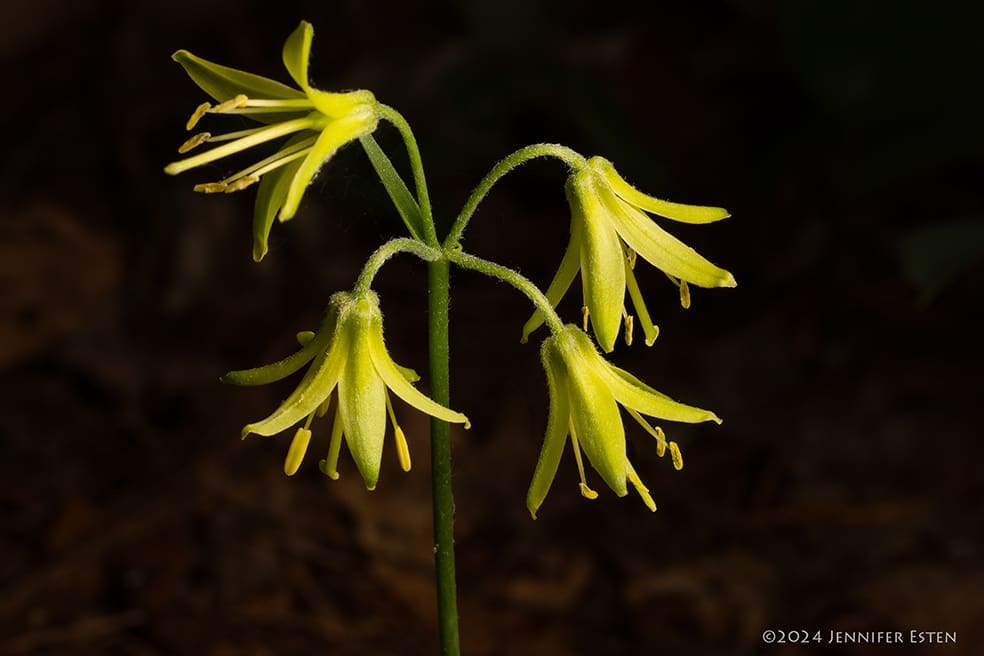
Bluebead Lily (Clintonia borealis)

As a harbinger of things to come, this Wintergreen (Gaultheria procumbens) is leafing out next to a berry from last season. It will flower in late June and July.
The Importance of Early Season Wild Flowers in Our Yards
A “No Mow May” has given many of us a chance to enjoy an abundance of wildflowers in our yards. Our yard is mostly a meadow of plants that have found their way here and get to stay if they are natives or at least well behaved and provide food and shelter for native species.
One of Jon’s favorites, Golden Alexander (Zizia aurea), has been spreading throughout the meadow. Its sprays of gold attract many native insect species and it is an important part of the support system for early season native flowering plants and their pollinators.

Golden Alexander – spring sunshine among the grass – is a native species and close relative of carrots, parsley, dill, celery and other members of the Family Apiaceae (or Umbelliferae).
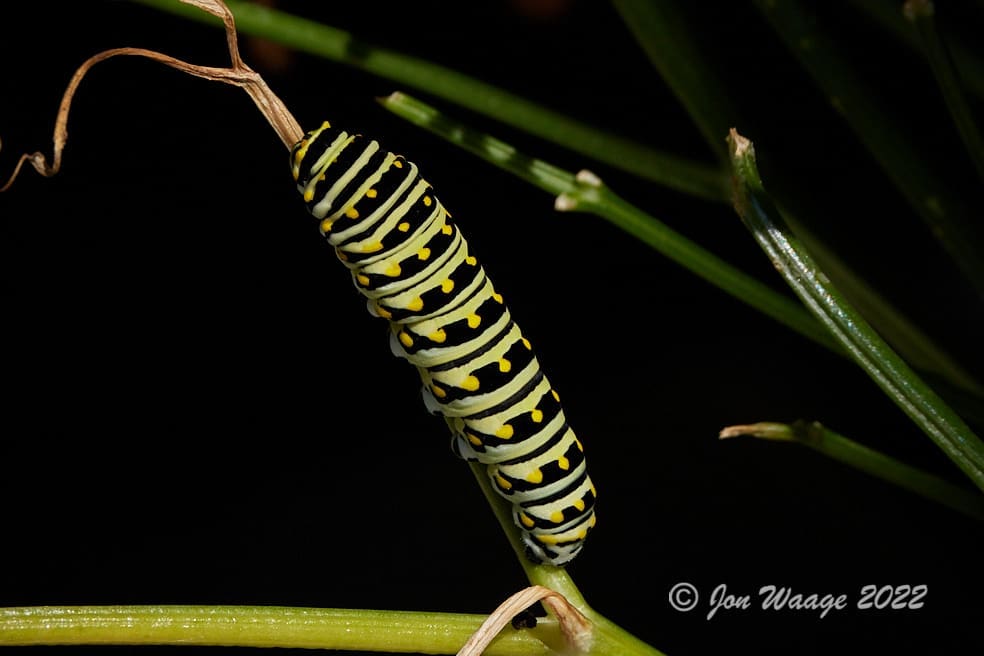
You may recognize this caterpillar if you have parsley or dill in your garden. It is the larva of the beautiful Black Swallowtail butterfly (Papilio polyxenes).

One of Black Swallowtail’s local native hosts is Golden Alexander.
Golden Alexander is an important plant in the lives of many native species of insects. Let’s see who visited during two hours on a sunny afternoon a week ago …

We all recognize the Honey Bee (Apis mellifera). This introduced species has become essential to North American agriculture but also has been shown to have negative impacts on many native plants and their pollinators.
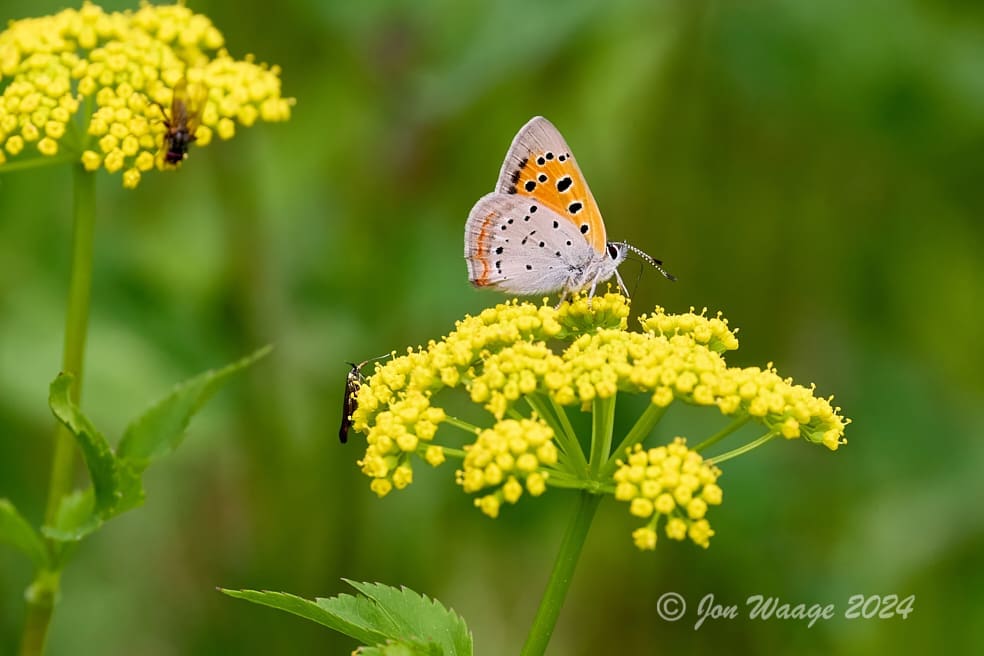
Native butterflies, like this American Copper (Lycaena phlaeas), visit frequently. It is not the only insect in this photo. A fly (on the flowers in upper left) and a moth (black insect to the left of the Copper) are also feeding on nectar and pollen.
 |
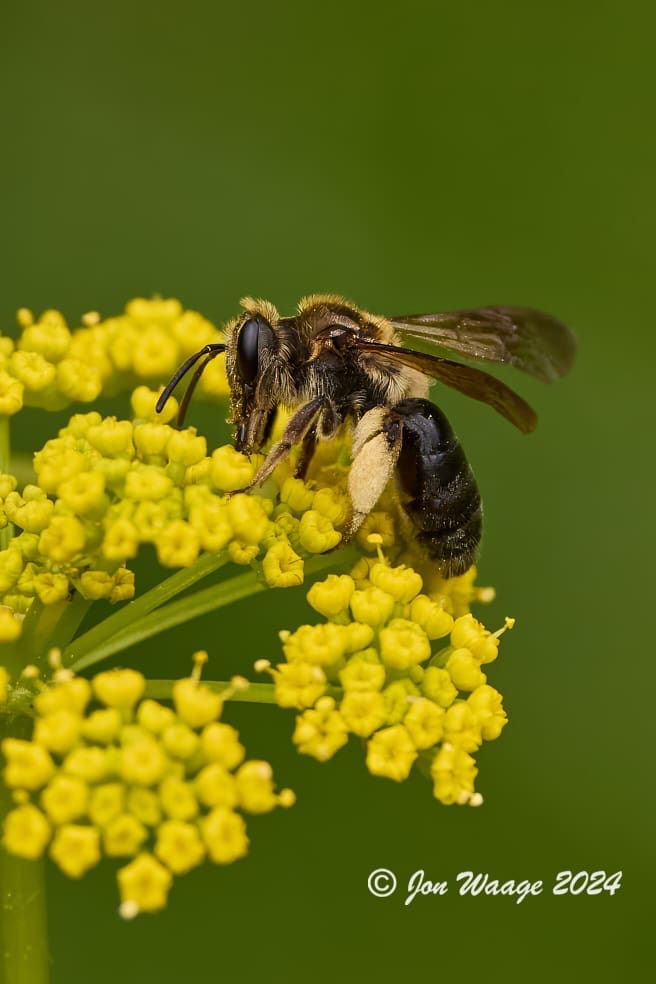 |
Two species of Mining Bees (Andrea spp.) were feeding on open and closed flowers. These native bees (over 450 species in North America) are essential early spring pollinators. Before Honey Bees were introduced, these were the main pollinators of fruit trees, blueberries and many other plants. If you find an anthill shaped mound of dirt (with a hole bigger than ants would make) in a bare patch of soil, it may belong to a female Mining Bee. That hole leads to a small tunnel with chambers within which she leaves a ball of pollen for each of her offspring to feed on. These bees are highly unlikely to sting (some species even lack stingers) and are an essential and beneficial part of a natural environment.
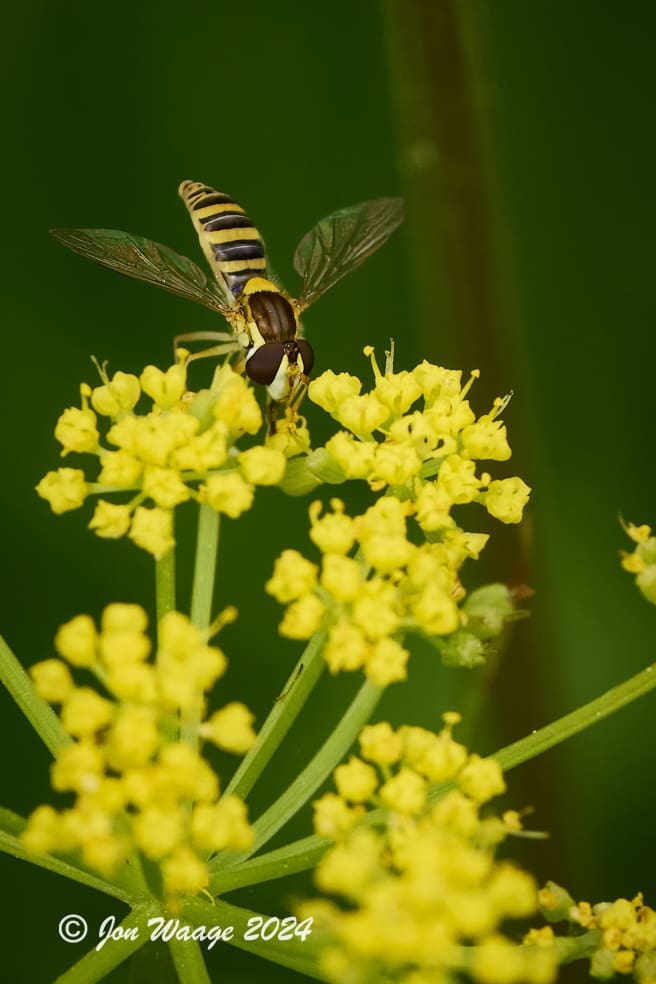 |
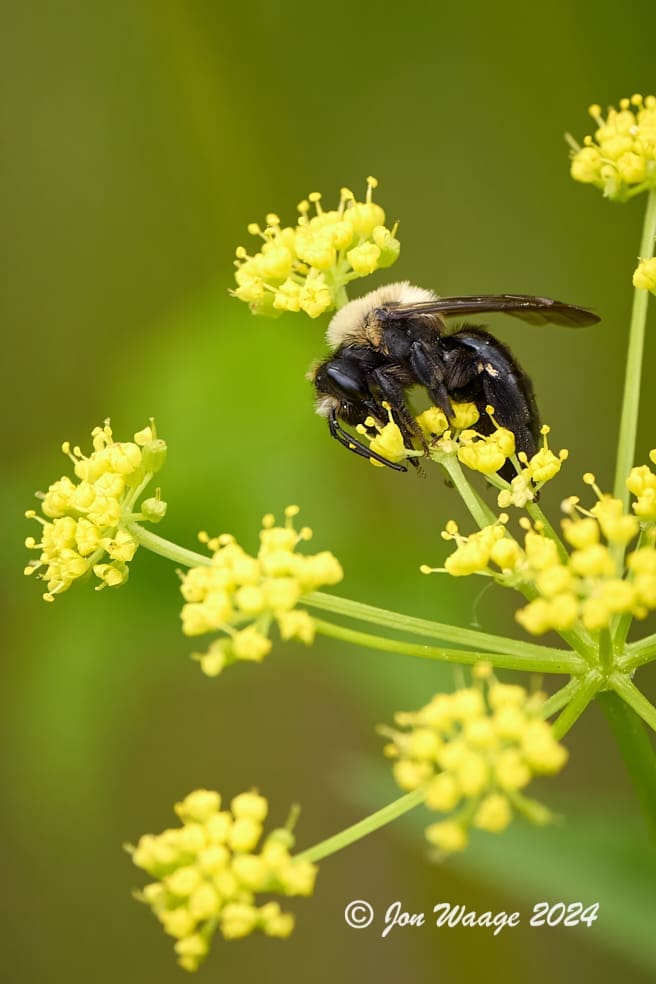 |
A Syrphid Fly and yet another species of Mining Bee. This is Mining Bee season, and most species will be gone by the end of the June. Their young overwinter as pupae in their chambers and emerge the following spring.

A Polistes Wasp (basically harmless to us), is an important predator of many garden pests. All wasps feed their young regurgitated “flesh” of caterpillars, whole insects and other invertebrates. Accompanying the wasp is a small Black Blister Beetle (Epicauta sp.). Blister Beetles are not good beetles to handle – they live up to their name! Their main diet is grasshopper eggs.
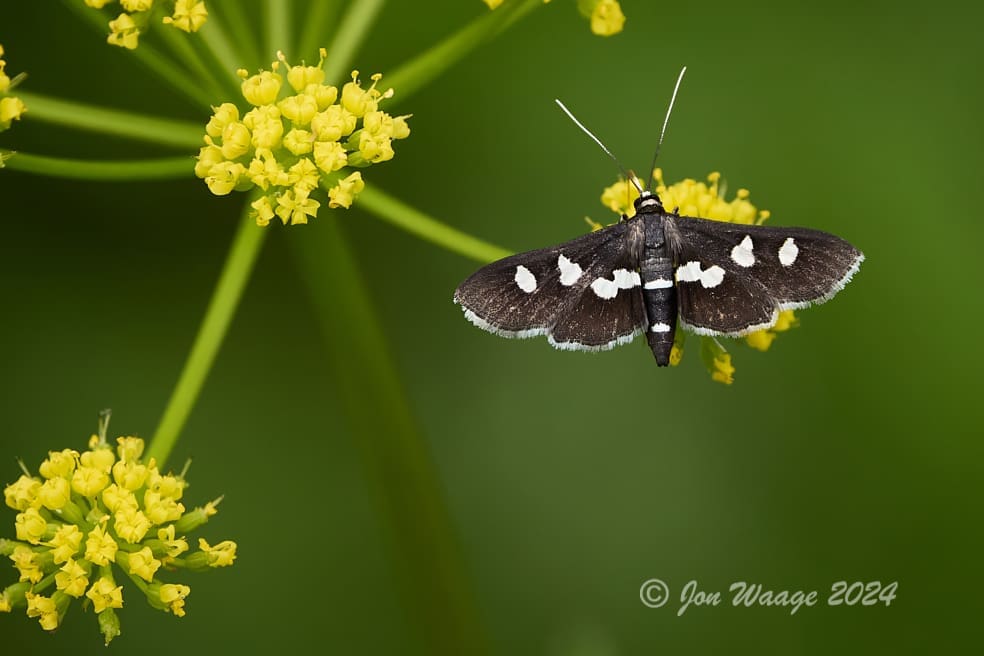
Another nectar seeking visitor was a day-flying moth in the genus Desmia.
That is an impressive list of visitors in just a couple of hours. Golden Alexander is just one source of food for early season pollinators and other insects.
Plants and insects use different ways of predicting the arrival of Spring and the changing climate can make it even more difficult to coordinate plant and pollinator life cycles. Like the Dandelions before them, Golden Alexander and other early bloomers provide a pollen and nectar buffer at a critical time of year.

Red and White Clovers are next in line as essential food plants for late spring and early summer. Like Honey Bees, both were introduced from Europe long ago. Clovers are valuable food for a wide variety of animals including humans.
They have symbiotic bacteria in their root nodules that provides them and eventually the soil they grow in with Nitrogen. Clover, especially white clovers, can be mowed to several inches to produce a nice alternative to part or all of a traditional grass lawn. Let it get tall enough to flower each year to support early pollinators. If you live near the Lake, clover lawns and flower filled meadows can also be an essential and self-sustaining way to reduce harmful chemical runoff into our Lake.
We hope this celebration of Golden Alexander helps us understand the contribution of native and some naturalized flowering plants and their pollinators to environmental sustainability as well as to our enjoyment.
Bye for now… Jon and Jen
Text and Photographs by Jen Esten and Jon Waage
